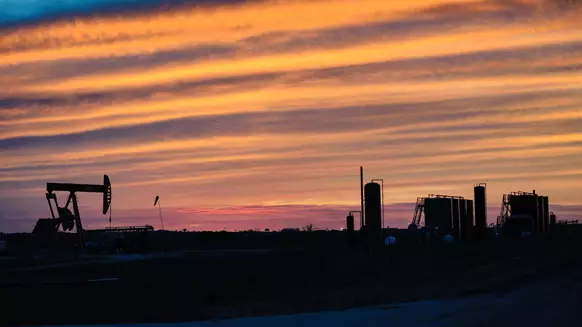 Back to the news list
Back to the news list
Supermajor ExxonMobil has revealed its plans to achieve net-zero greenhouse gas emissions from operated assets in the U.S. Permian Basin by 2030.
Exxon said that the plan would accelerate and expand its emission-reduction plans for unconventional operations in New Mexico and Texas. They are also a part of the corporate-wide effort to reduce upstream greenhouse gas emissions intensity by 40-50 percent by 2030, compared to 2016 levels.
“Our groundbreaking plans to reach net-zero for Permian Basin operations further demonstrate our commitment and support of society’s ambitions for a lower-emissions future. We have plans to reduce greenhouse gas emissions intensity across our businesses by deploying the capabilities and technical strengths that are foundational to ExxonMobil,” said Darren Woods, Chairman and Chief Executive Officer, stated.
The greenhouse gas emission-reduction efforts in the Permian will be supported by electrifying operations, continuing investments in methane mitigation and detection technology, eliminating routine flaring, upgrading equipment, and employing emissions offset technology, which may include nature-based solutions.
The company added that it would electrify its operations with low-carbon power, which may include wind, solar, hydrogen, natural gas with carbon capture and storage, or other emerging technologies. ExxonMobil plans to expand its methane detection programs utilizing satellite surveillance and a network of ground-based sensors for continuous monitoring, and aerial flyovers that identify leaks for rapid repairs.

Exxon has revealed its plans to achieve net-zero greenhouse gas emissions from operated assets in the U.S. Permian Basin by 2030.
By year-end 2021, ExxonMobil anticipates reduced flaring volumes across its Permian Basin operations by more than 75 percent compared to 2019. The company plans to eliminate all routine flaring in the Permian by year-end 2022, in support of the World Bank’s Zero Routine Flaring initiative. The company said it was also securing alternative natural gas delivery points across the basin to minimize non-routine flaring.
“Our goal of net-zero for Scope 1 and Scope 2 greenhouse gas emissions is one of the most ambitious and wide-reaching in the Permian Basin. Throughout the value chain, our people are working hard to help reduce the greenhouse gas emissions associated with the products that enable modern life,” Bart Cahir, senior vice president of unconventional at ExxonMobil, claimed.
The company is currently on track to exceed its 2025 greenhouse gas emission-reduction plans announced in December 2020. Year-end 2021 results are expected to show a reduction of 15-20 percent in greenhouse gas intensity from upstream operations compared to 2016 levels, four years ahead of schedule. This is supported by an anticipated reduction of 40-50 percent in methane intensity and 35-45 percent in flaring intensity compared to 2016.
Plans for the Permian Basin further support ExxonMobil’s corporate methane reduction objectives and are aligned with the U.S. and European Union-led Global Methane Pledge to reduce methane emissions by 30 percent by 2030. To validate its emissions-reduction efforts, ExxonMobil is working with an independent validator, non-profit MIQ through a pilot program initially focused on Poker Lake facilities in New Mexico. Through the program, natural gas will be certified based on a series of factors including methane intensity, and will be marketed to customers early next year. The certification process could be expanded to other production areas based on demand.
At the end of the third quarter of 2021, ExxonMobil reported producing an average of 500,000 barrels of oil equivalent per day from its unconventional assets in the Permian, accounting for more than 40 percent of the company’s U.S. net production. As production increases, Exxon expects to mitigate GHG emissions accordingly. Worth noting, costs associated with lower-emissions technology are included in the corporate plan through 2027, announced earlier this month.
Không thể sao chép